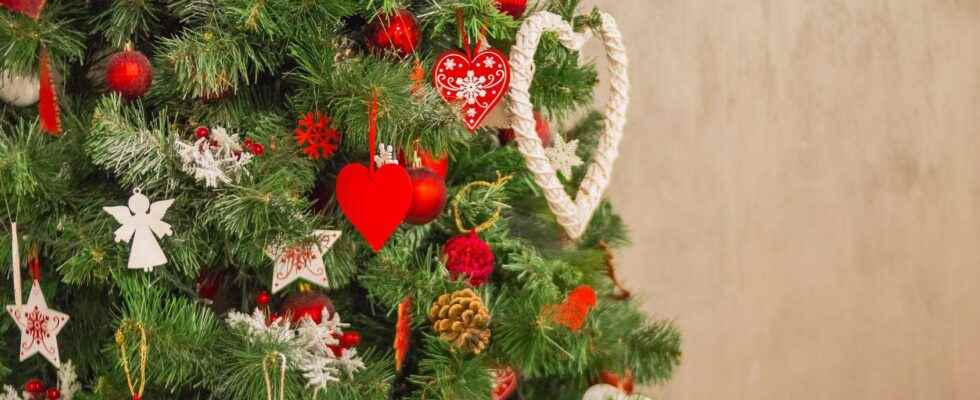On the one hand, the artificial tree is reusable every year. On the other hand, natural fir is biodegradable and stores CO2. Which one should you choose to reduce your carbon footprint as much as possible?
One in four French households bought a Christmas tree in 2017, according to the Kantar TNS research institute, seven million trees sold per year. 84% are natural firs, against 16% artificial trees. But is it really reasonable to cut down a tree that took between 9 and 14 years to grow in order to keep it barely a few weeks in an apartment? The option fir artificial, which can be kept for several years, seems a priori more durable.
The artificial tree has a much less favorable carbon footprint
In fact, artificial trees made from derivatives of oil are not more ecological. A Quebec study of 2009 compared the life cycle of a natural tree carrying 150 km of transport and an artificial tree made in China and kept for six years. The results are largely favorable to the first, with 3.1 kg of CO2 emitted against 8.1 kg of CO2 per year for the second. It would therefore be necessary to keep your artificial tree for nearly 20 years so that its carbon footprint becomes favorable. Indeed, the natural fir stores CO2 during its growth and can be easily recycled.
Origin, method of cultivation, species… The right choices for a more ecological tree
The natural fir is doing all the better because the majority of trees sold in France are not pulled up in the forest but cultivated especially for Christmas, on a dedicated area of more than 5,000 hectares, mainly in the regions of Morvan, Jura, Poitou and Burgundy. Nordman, which represents 75% of sales, more often comes from European forests (Denmark or Finland). In this case, transport increases its balance sheet carbon ; do not hesitate to inquire about its origin. However, coniferous forests are generally poor in biodiversity and have a reputation for participating in soil acidification. False, answers the French Association of the Natural Christmas Tree (AFSNN): “A plantation of Christmas trees remains in place for a maximum of 10 years. litter (dead branches, needles) responsible for acidification therefore does not have time to form. Finally, between two rotations of Christmas trees, many producers carry out intercropping, cereals or green manures which fertilize the soil, ”explains AFSNN.
To benefit from an ecological Christmas tree, choose the “Blue Plant” labels, certifying reasonable operating conditions, or Label Rouge, which guarantees felling after November 21 and a lower planting density.
What to do with your tree after the holidays?
Watch out for the end of the life of the tree: 16% of the trees are simply thrown away, 44% are dropped off at a collection point and 31% are recycled directly by consumers into drink of chimney Where compost. An option that is not necessarily ecological: “A day of wood heating with a fireplace is equivalent to emissions particles at around 3,500 kilometers behind the wheel of a diesel vehicle ”, notes Charlotte dreamer, engineer of the Observatory ofair in Ile-de-France. In this case, choose a closed hearth with a high performance system which makes it possible to reduce by 30 the particles emitted compared to an open hearth according to Ademe. Even better: more and more brands are offering to replant your potted tree after the holidays.
Interested in what you just read?
.
fs12
